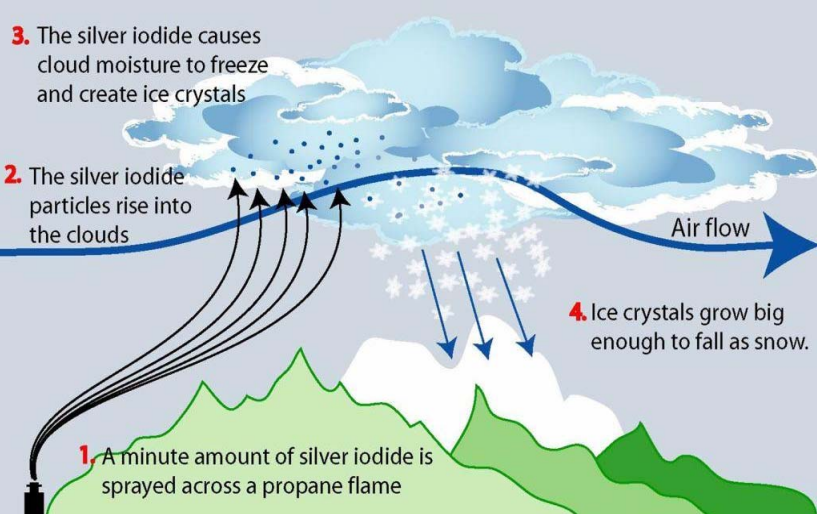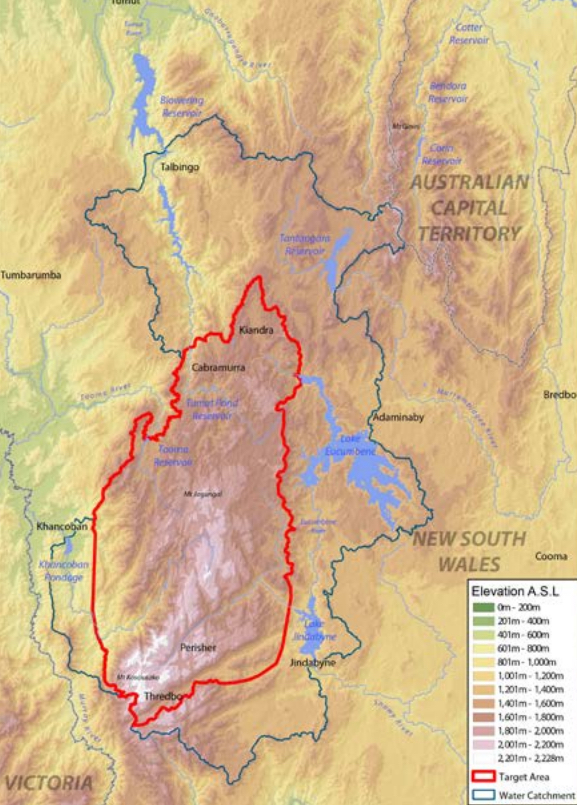Cloud seeding in Australia
Cloud seeding is used in parts of Australia to enhance rain, snowfall and water security. So, what is cloud seeding, how does it work and where is it used in Australia?
What is cloud seeding?
Clouds form when water vapor in the atmosphere cools and condenses to form tiny water droplets or ice crystals in the sky. These small droplets and crystals usually form around even smaller particles of dust, salt and other aerosols floating in the atmosphere, which are called cloud condensation nuclei.
The condensation nuclei that give birth to clouds are extremely small, measuring around two micrometres, which is about 1/100th the size of a single cloud droplet.
Cloud condensation nuclei can be introduced into the atmosphere naturally or artificially. Some of the natural sources include bushfires, volcanoes and dust storms, while artificial sources of condensation nuclei include industry emissions and cloud seeding operations.
Cloud seeding is an artificial weather modification technique that involves introducing cloud condensation nuclei into the atmosphere, which enhances a cloud’s ability to produce rain and snow.
How does cloud seeding work?
Cloud seeding involves adding small particles into existing clouds to help them grow. The most common particulate used in cloud seeding is silver iodide, which has a similar structure to ice crystals and helps supercooled liquid water droplets cluster together.
Silver iodide helps rain drops and ice crystals grow larger and increases the amount of rain and snow that can fall from clouds. This process is known as glaciogenic cloud seeding.
The image below shows how silver iodide can be used to create snow on the leeside of a mountain range.

Image: How cloud seeding works in the NSW Snowy Mountains. Source: Snowy Hydro
Why is cloud seeding used?
Cloud is an effective and safe way to enhance rain and snowfalls above natural levels. In Australia, cloud seeding is used in some areas to increase surface water runoff for use in the production of hydropower. Once this water is released from the hydropower lakes, downstream river catchments can also benefit from increased water to irrigate crops. The increased snowfall can also benefit ski resorts within the cloud seeding areas.
When did cloud seeding begin in Australia and is it still happening?
Cloud seeding experiments began in Australia during 1947 after American scientists made the discovery in 1946. The first trials were carried out near Sydney by Kraus and Squires in 1947.
Cloud seeding trials continued through the late 1950s and early 1960s by the CSIRO in the Snowy Mountains, in the New England district of NSW, the Warragamba catchment near Sydney and in the York Peninsula in SA. Of these four experiments, the Snowy Mountains saw statistically significant increases in rainfall during the experiment. Trials in Tasmania were also successful and since the 1960’s, Hydro Tasmania has continued cloud seeding over the state.
Cloud seeding is still practiced in the Snowy Mountains in NSW today, carried out by Snowy Hydro Limited. This cloud seeding area spans over the high elevation areas of the Snowy Mountains within the Snowy Hydro water catchment area, covering approximately 2110 square kilometres.

Figure 1: The area which is primarily targeted for increased precipitation from cloud seeding operations is shown in red (approximately 2110 km²). Source: Snowy Hydro
According to Snowy Hydro, their “Cloud Seeding Program increases precipitation by an average of 14 percent”.
When does cloud seeding occur in NSW?
Under NSW legislation, Snowy Hydro can only cloud seed when precipitation is likely to fall as snow to elevations below 1,400 metres. This means cloud seeding operations happen only during suitable cold weather systems, generally cold fronts between May and October.
Snowy Hydro also has other criteria for cloud seeding which includes;
- Suitable cloud depth
- Cloud temperature
- Wind direction
- The amount of liquid water in the atmosphere below freezing (‘supercooled liquid water’).
In addition to these atmospheric conditions, Snowy Hydro also takes into account the amount of water already in the landscape.
“We also assess the Snowy Scheme’s reservoir storage levels to ensure additional snowmelt from cloud seeding will not contribute to flooding downstream”, Snowy Hydro said.
The extra water produced from cloud seeding can sit in water storages for multiple years. This stored water can help ensure renewable energy generation and downstream water availability during future drier years, when inflows are lower.

Silver Iodide is safe to use in cloud seeding operations because it is found naturally in the atmosphere, soil and sediments of the Snowy Mountains region. Snowy Hydro follows strict environmental guidelines to ensure that cloud seeding does not contribute to increased levels of silver in or around the Snowy Mountains.
You can find out more about Snowy Hydro’s cloud seeding operations here.